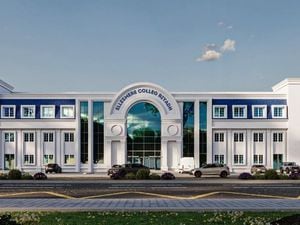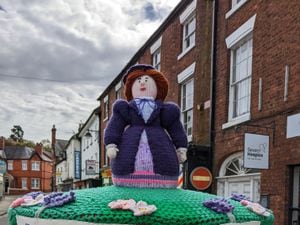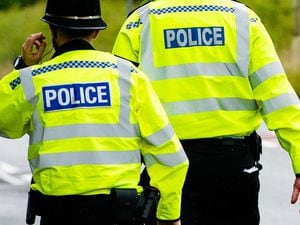Warning over poisonous blue-green algae at the Mere in Ellesmere
Dangerous blue-green algae has appeared at a Shropshire beauty spot, with people told to stay away from the water.

Visitors are being advised not to take a dip in the Mere at Ellesmere or let their pets go in or drink the water as a precautionary measure after an amount of suspected blue-green algae blooms have again appeared on the lake.
Blue-green algae are a common form of bacteria that occurs naturally in inland waters, estuaries and the sea. Blooms usually form in shallow water that is subject to strong sunlight, and are a blue/green colour.
Blue-green algae generally grow in lakes, ponds, and slow-moving streams when the water is warm and enriched with nutrients like phosphorus or nitrogen.
If the blue-green blooms are swallowed, they can cause stomach upsets in humans and more serious illnesses in pets.
When environmental conditions are just right, blue-green algae can grow very quickly in number.
The blooms usually occur in the summer but there are no quick or easy remedies for the control of blue-green algae once they appear in a lake or pond.
Shropshire Council has put up warning signs around the Mere to warn residents about the blue-green algae.
Stuart Edmunds, from Shropshire Wildlife Trust, said: "Blue-green algal blooms are natural annual features of some waterbodies across the UK and will be benefitting from ideal weather conditions in Shropshire over the last few months.
"People may be exposed to the toxins in blue-green algae through contact with the skin (e.g. when swimming), through inhalation or by swallowing contaminated water.
"These toxins can cause skin rashes, nausea, vomiting, stomach pains, fever and headaches.
"Occasionally they can cause more serious illness such as liver and brain damage.
"Children are at greater risk than adults of developing problems.
"It is recommended that pet owners avoid letting their pets enter any water body where the algae is present.
"The algae effects fish as it blocks the absorption of oxygen into the water, so many fish can suffocate.
"The cyanotoxins present in blue-green algae can also kill ducks, birds and wild mammals such as water voles.
"The blooms pass once the weather cools down."
A sign by Shropshire Council near the Mere states: "Please be aware that toxic blue-green algae is present in The Mere.
“Whilst this is a natural occurrence – it can cause stomach problems and skin/eye irritation in people and animals, sometimes severely.
“Do not let your children or dogs play in the water. Do not let dogs drink the water.”
Some blooms can kill a dog in just 15 minutes

Blue-green algae is a common form of bacteria that occurs naturally in inland waters, estuaries and the sea. Blooms usually form in shallow water that is subject to strong sunlight, and are a blue/green colour.
If the blue-green blooms are swallowed, they can cause stomach upsets in humans and more serious illnesses in pets. Some types can kill a dog just 15 minutes to an hour after drinking contaminated water.
The bacteria cannot be seen with the naked eye unless they clump together. When this happens, blue-green algae can look like green flakes, greenish bundles or brown dots in a pond, lake or stream.
When the algae blooms, it can give look like a blue-green scum has appeared on the surface of the water. It sometimes looks a bit like pea soup.
Blooms of the organisms often build up around the edges of ponds and lakes, which may look like foam.
It is most common in non-flowing fresh water such as lakes and ponds during hot weather when there is less rainfall, but can also occur at other times of the year.





